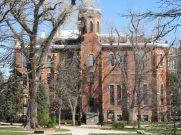“The arrangement of teaching responsibilities of Bowdoin faculty presupposes professional duties not only of original scholarship and creative work but also of supervision of advanced student projects.”
The Mission of the College.
In our previous Preliminaries on the history of Bowdoin College, we recounted the ways in which Bowdoin has reimagined its curriculum since 1802. The most significant reconceptualization of Bowdoin’s curriculum took place in 1969, when President Roger Howell Jr. led Bowdoin to abolish its general education requirements in favor of an education which was designed by the individual preferences of each student. This curricular change reflected a new mission for the college in which it sought to liberate students from cultural restraints rather than initiate them into their culture. But lingering beneath the reimagining of the curriculum, the college, and the students was something even more basic: a reconceptualization of the Faculty.
For most of Bowdoin’s history, faculty members saw it as their purpose to transmit knowledge to their students. But that slowly began to change in the early twentieth century, when Bowdoin commenced appointing faculty members whose primary interest lay in the creation of new knowledge, i.e. in research. The watershed moment in the history of the Bowdoin Faculty was the appointment of President James Stacy Coles in 1952, who ushered in a new vision of Bowdoin’s Faculty in which it would seek to balance research and teaching and would work to initiate students into knowledge creation. This effectively undermined the old vision of the curriculum, which opened the door for the abolition of general education in 1969. In the years since, this research orientation of the Faculty has grown only more acute. In our eleventh Preliminary of the Bowdoin Project, “From Collegiate Professors to Research-Teachers,” we briefly trace the history of the rise of the research university and its reception in the broader intellectual and academic landscape, and we provide a succinct overview of the somewhat controversial entrance of the “research-teacher” into the Bowdoin community.
* * *
Since September 2011, NAS has been conducting an in-depth, ethnographic study of Bowdoin College in Maine. We asked, “what does Bowdoin teach?” and examined Bowdoin’s formal curriculum, its residential and student life policies, and its co-curricular and extra-curricular activities. We have dedicated a page on our website to the Bowdoin Project. The full report will be published there in April. In the meantime, we will continue posting a series of Preliminaries which will provide context for the report.













